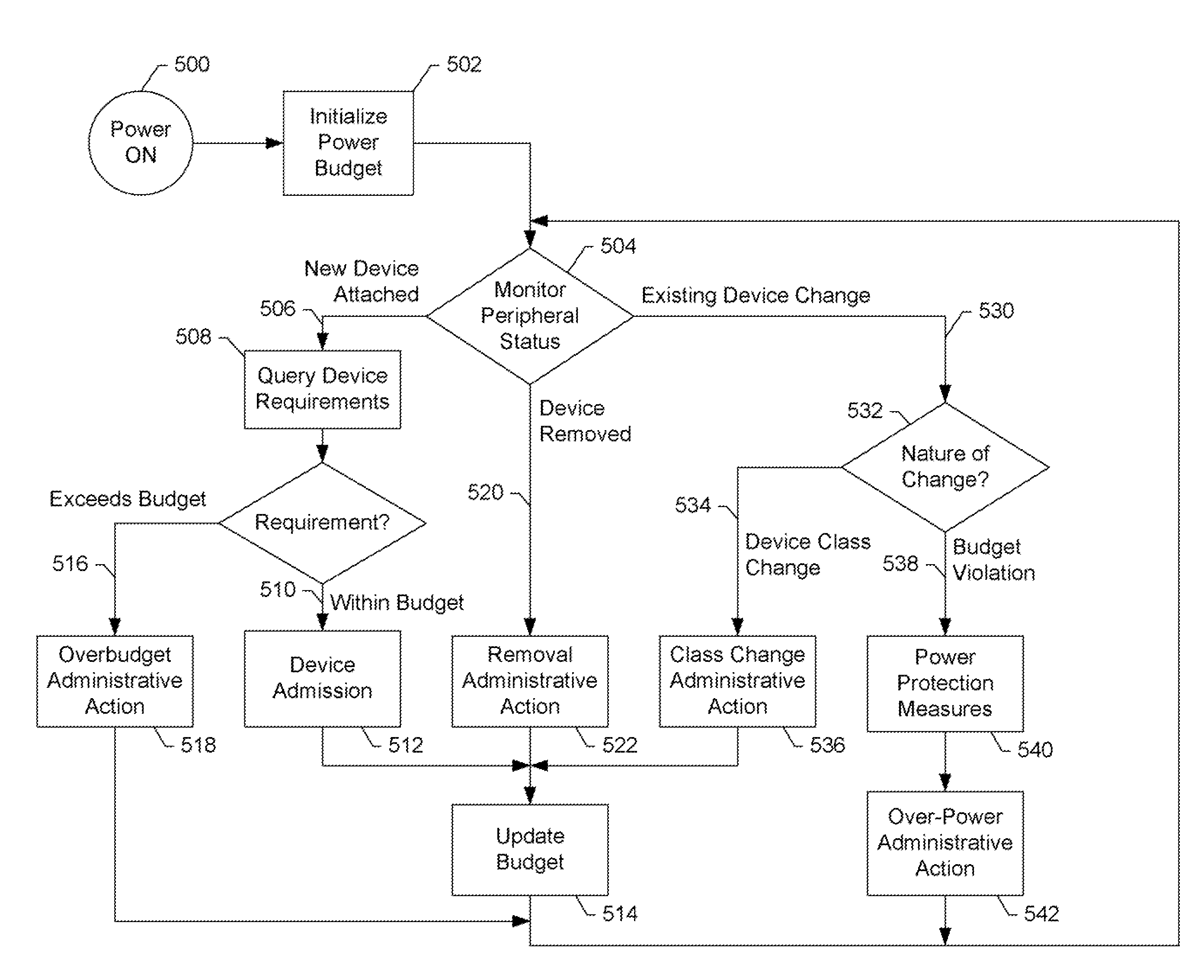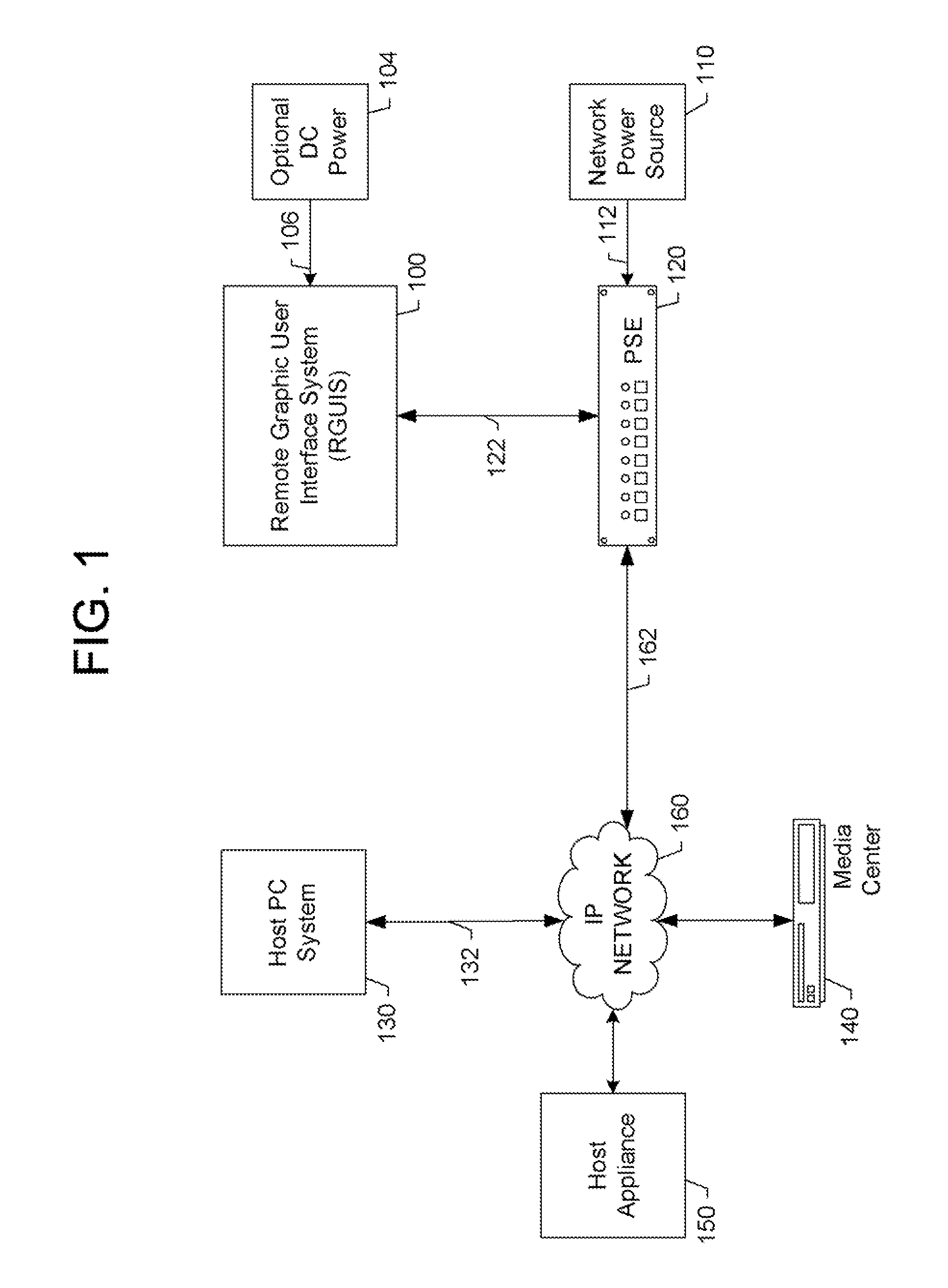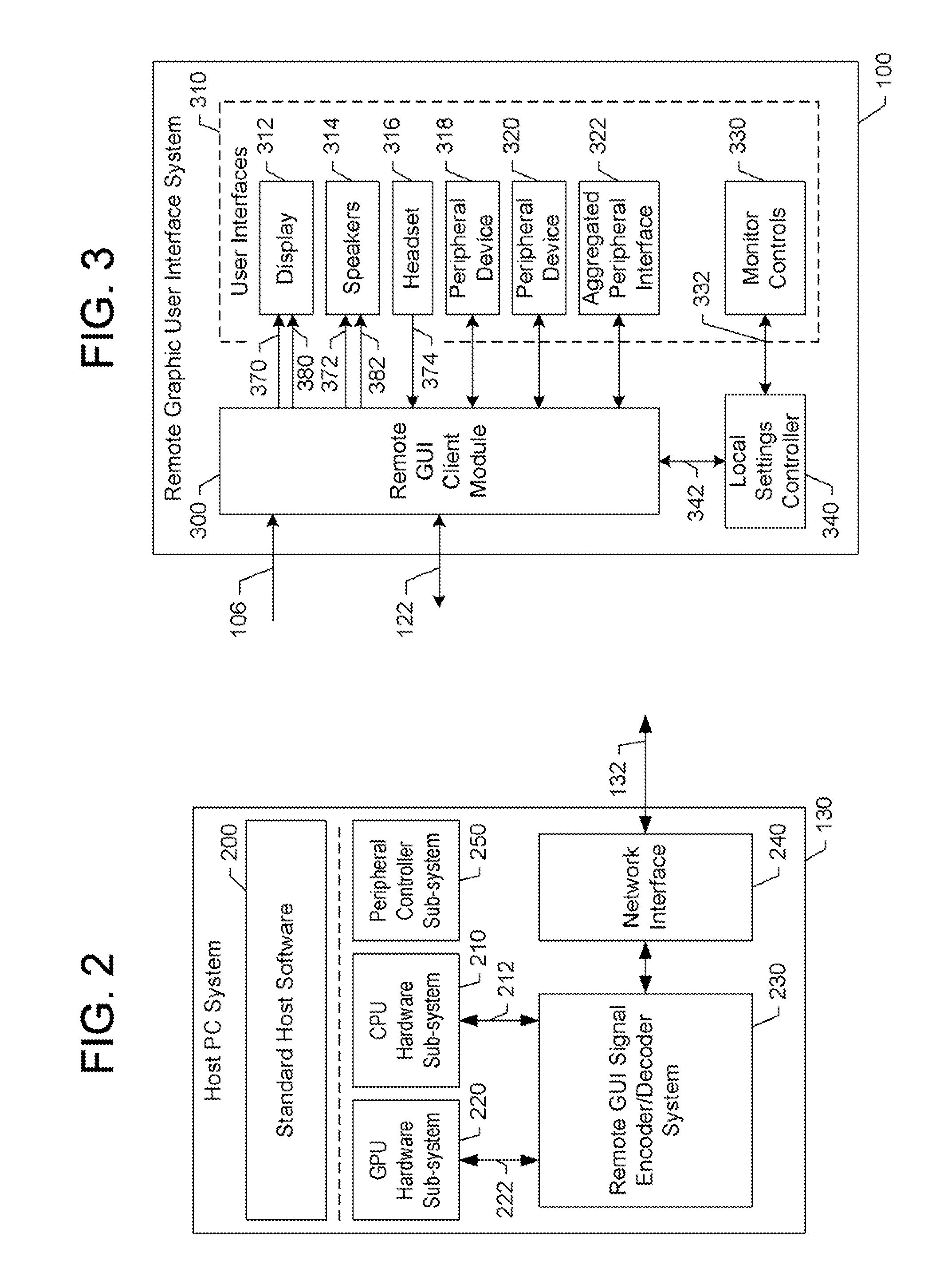Methods and apparatus for managing a user interface on a powered network
a user interface and powered network technology, applied in the direction of liquid/fluent solid measurement, data switching details, instruments, etc., can solve the problems of complex and difficult management of personal computers, complicated installation, and associated installation and ongoing maintenance costs, and achieve the effect of efficient operation
- Summary
- Abstract
- Description
- Claims
- Application Information
AI Technical Summary
Benefits of technology
Problems solved by technology
Method used
Image
Examples
case 520
[0044]In case 520, a device is removed so removal administrative action is optionally taken as step 522 and the current power budget is updated as step 514. For example, when the device is removed, a host administration function may be notified. The system then returns to step 504.
[0045]In case 530, the power characteristics or consumption of a device changes so step 532 tests the action to be taken dependant on the nature of the change. In one embodiment, a change in power consumption related to one peripheral device has the effect of changing the class of another peripheral device. For example, a mouse changing from a standby mode in which minimal power is consumed to an operational mode in which a nominal power is consumed may trigger an automatic change in power class for an associated display monitor peripheral from a standby power consumption to nominal operating power consumption. In another embodiment, the change is associated with the same device. In case 534 there is a det...
PUM
 Login to View More
Login to View More Abstract
Description
Claims
Application Information
 Login to View More
Login to View More - R&D
- Intellectual Property
- Life Sciences
- Materials
- Tech Scout
- Unparalleled Data Quality
- Higher Quality Content
- 60% Fewer Hallucinations
Browse by: Latest US Patents, China's latest patents, Technical Efficacy Thesaurus, Application Domain, Technology Topic, Popular Technical Reports.
© 2025 PatSnap. All rights reserved.Legal|Privacy policy|Modern Slavery Act Transparency Statement|Sitemap|About US| Contact US: help@patsnap.com



